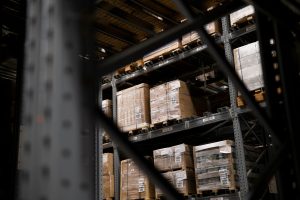Climate-Conscious Delivery: The Rise of Electric Last-Mile Logistics
The transportation industry is responsible for a significant portion of carbon emissions, making it a major contributor to climate change. As we become more aware of the negative impact of fossil fuels on the environment, the need for sustainable transportation solutions becomes increasingly urgent. This has led to the rise of electric last-mile logistics, a revolutionary concept that is transforming the way goods are delivered while reducing the carbon footprint. In this article, we will explore the concept of climate-conscious delivery and the growing popularity of electric last-mile logistics.
The Importance of Climate-Conscious Delivery
Transportation is an essential component of our daily lives. Whether it is commuting to work, taking a trip, or having groceries delivered to our doorstep, we are constantly reliant on transportation. However, the environmental cost of this convenience cannot be ignored. The transportation sector accounts for about one-quarter of all carbon emissions, making it a significant contributor to climate change. As a result, there is a growing awareness of the need for climate-conscious transportation practices.
What is Last-Mile Delivery?
Last-mile delivery refers to the movement of goods from a transportation hub to their final destination, which is typically the customer’s doorstep. This final leg of the delivery process is notoriously inefficient and creates a significant environmental impact. Traditional last-mile delivery methods rely heavily on fossil fuel-powered vehicles, such as diesel trucks and vans, contributing to air pollution and greenhouse gas emissions. As a result, companies are now looking for ways to make last-mile delivery more sustainable.
The Rise of Electric Last-Mile Logistics
The adoption of electric vehicles (EVs) is gaining momentum as a promising solution to reduce the environmental impact of last-mile delivery. EVs are powered by electricity, eliminating the need for fossil fuels and significantly reducing carbon emissions. This makes them an ideal option for companies looking to make their delivery operations more environmentally friendly.
The Benefits of Electric Last-Mile Logistics
Besides the obvious environmental benefits, electric last-mile logistics offers a variety of advantages for businesses. EVs have lower maintenance costs compared to traditional vehicles, as they have fewer moving parts. This means reduced repair and maintenance expenses, ultimately resulting in cost savings for companies. Additionally, the use of EVs can improve a company’s brand image, as more customers are becoming environmentally conscious and prefer to support sustainable businesses.
Examples of Companies Implementing Electric Last-Mile Logistics
Several companies have already made the switch to electric last-mile logistics or have announced plans to do so in the near future. For example, Amazon has committed to making half of its deliveries carbon-neutral by 2030 and plans to have 100,000 electric delivery vehicles in its fleet by 2025. Similarly, UPS aims to have 40% of its ground transportation fleet be electric by 2025.
The Challenges of Electric Last-Mile Delivery
Although the benefits of electric last-mile delivery are significant, there are also challenges that need to be addressed. One of the main concerns is the current lack of charging infrastructure, which can limit the range of EVs and prolong delivery times. Additionally, the initial cost of purchasing electric vehicles can be higher compared to traditional diesel vehicles, which can discourage some companies from making the switch. However, as technology advances and the demand for EVs increases, these challenges are expected to decrease.
The Future of Last-Mile Delivery
The rise of electric last-mile logistics is just the beginning of a significant shift towards more sustainable transportation practices. As governments and consumers continue to prioritize environmental sustainability, we can expect to see an increased adoption of electric vehicles, improved charging infrastructure, and more innovative solutions for sustainable last-mile delivery. The future of last-mile delivery is electric, and this is a promising step in the fight against climate change.
Conclusion
The transportation sector has a significant role to play in combating climate change. As we become more aware of the environmental impact of traditional delivery methods, there is a growing demand for more sustainable alternatives. Electric last-mile logistics offers a promising solution, with its potential to significantly reduce carbon emissions and improve business operations. As companies continue to make the switch to electric vehicles, we can hope for a future where last-mile delivery is more efficient, cost-effective, and environmentally friendly.











